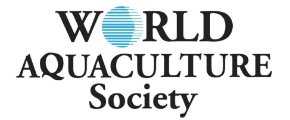ECONOMICS, SUSTAINABILITY AND RISKS FACTORS ASSOCIATED WITH LARGE SCALE COMMERCIAL TILAPIA CULTURE IN MALAWI: A COMPARISON OF PRODUCTION SYSTEMS.
Few economic studies providing detailed economic break-downs of capital investment, operating costs and returns in large-scale commercial tilapia culture systems in Africa exist. Lutz (2000) produced one of the only published accounts on the economics and potential competitive dynamics of commercial tilapia aquaculture operations scaled for owner-operators in the Americas in the literature.
In addition, studies are lacking on the economics, sustainability and risk factors of Biofloc Technology (BFT) systems under commercial conditions. Based upon empirical data captured from Chambo Fisheries in Malawi, purportedly the largest tank farm in Africa and the largest tilapia biofloc tank farm in the world, an economic model has been constructed comparing investment and farm gate production costs across four major tilapia farming grow-out technologies all producing 800 tonnes per annum (live weight) given placement on or near Lake Malawi.
The study indicated that farm gate production costs on a live weight fish basis were US$ 2.09/kg for the Lake Cage Culture model, US$1.31/kg for the SAFF-BFT farm, US$1.42/kg for the Greenwater Pond farm and US$1.75/kg for the SAFF-Recirculated Aquaculture System (RAS) farm. The production cost advantage of the SAFF-BFT was significant at 59.5% over the lake cage culture model, 8.35% over the Greenwater Pond farming model and 33.6% over the SAFF-RAS operation.
Sustainability indicators were assessed for the four commercial tilapia farming operations where the SAFF-BFT and SAFF-RAS farms performed best followed by the Greenwater Pond farm. The large-scale Lake Cage Culture Farm was considered unsustainable based upon high nitrogen and phosphorus emissions and Total Fecal Solids (TFS) loading into lake ecosystems. Furthermore, the large-scale lake cage culture model fails to achieve economic sustainability at selling prices competitive with the lowest cost supply sources of wild-caught fish protein imported from Namibia and South Africa which retails at US$2.20/kg in neighbouring Mozambique. Among the risk factors highlighted stock theft was identified as the major risk factor impacting profitability particularly in the Lake Cage Culture and Greenwater Pond Farming operations due to greater difficulties to implement effective security measures in practice in Malawi.










